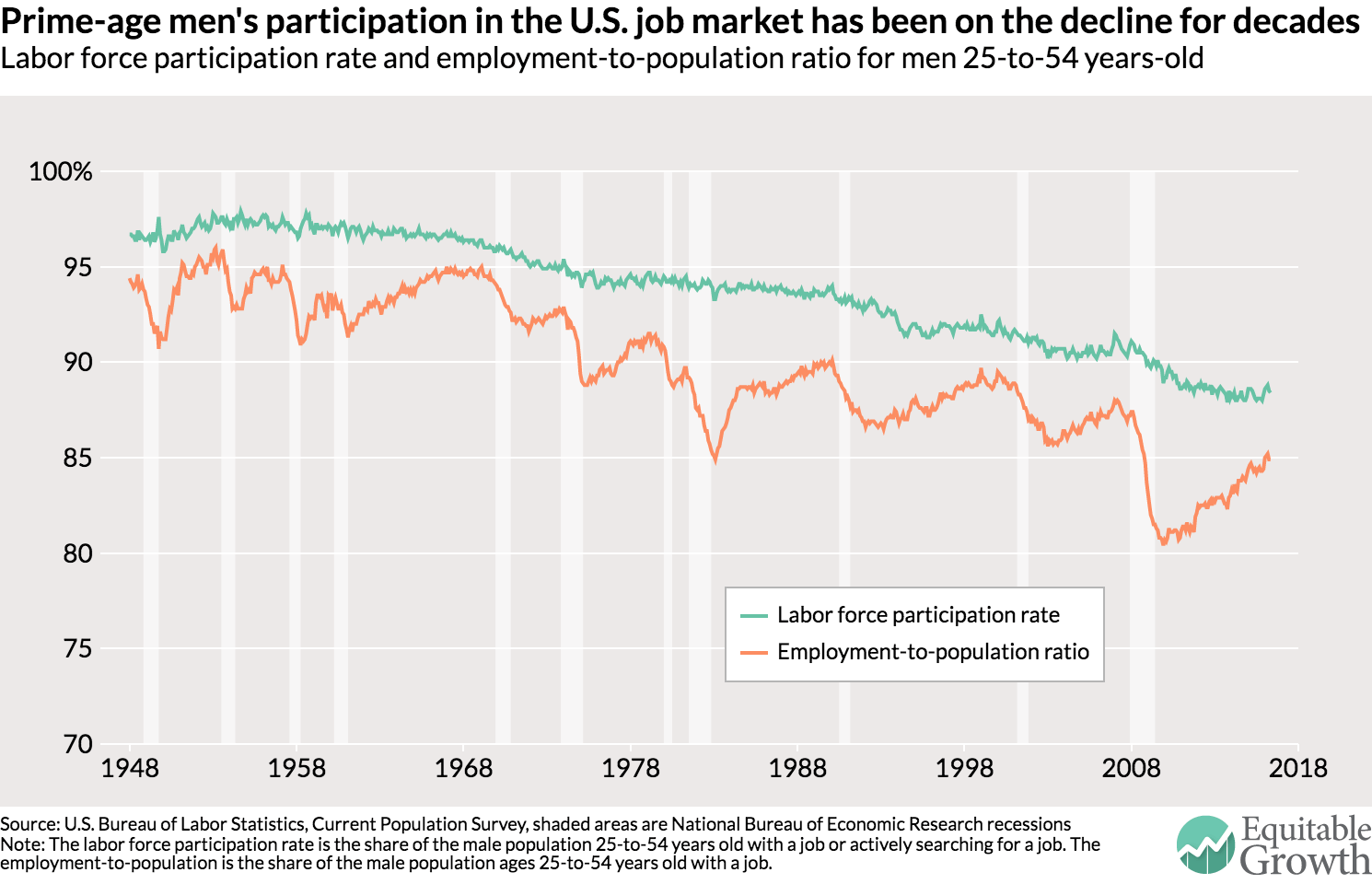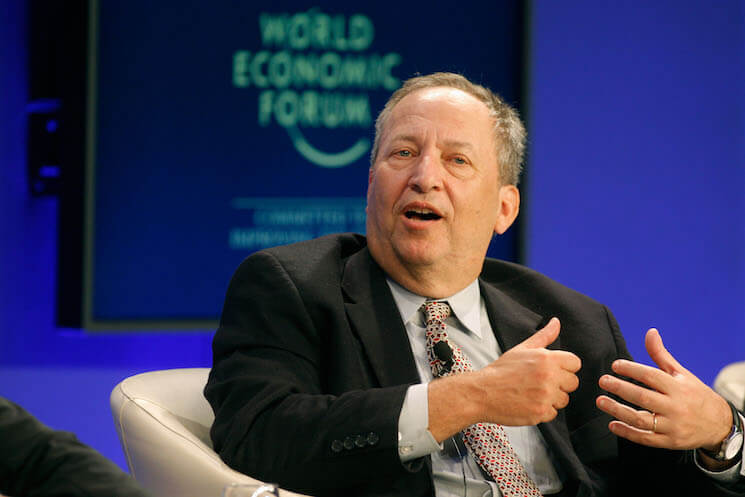Must-Read: As I was just saying yesterday: Take the rate of profit–typically 6% to 7% per year–on the operating companies that make up the stock market. Subtract the risk premium–typically 4%. Add on the expected inflation rate–2.5% on the CPI basis. Get 4.5% to 5.5%. That is what the nominal interest rate on Treasury bills is likely to be in normal times toward the end of a healthy expansion. That provides a healthy amount of room for the Federal Reserve to cut interest rates to encourage spending and support the economy when a recession comes. But note that 5% of sea-room to cut interest rates when necessary was not nearly enough back in 2007-2010.
Now suppose that we are entering an age of secular stagnation. It will have a higher risk premium–say 5-6%. Slower growth will have an impact on the rate of profit for operating companies–knock, say, 1-2% off their typical value. Go through the math, and we get a likely nominal interest rate on Treasury in normal times toward the end of a healthy expansion of roughly 1-3%, not 5%.
The dot-plots tell us that the FOMC now thinks that it is headed for a 3% Treasury Bill rate–at the upper end of this range, but still very far from a 5% rate. And if we do live in a semi-permanent age of secular stagnation, this will not be a temporary inconvenience but, rather, a permanent structural fact.
That means that if the FOMC keeps its current inflation target then it will have only 3% of sea-room when the next big recession comes, whether next year, next decade, or a quarter century from now.
That means that if the FOMC keeps attempting to raise interest rates back to a 5% normal–or even, unless it is lucky, to a 3% normal–it will find itself continually undershooting its inflation target, and continually promising that rates will go up more real soon now as soon as the current idiosyncratic fit of sub-2% inflation passes.
I do not know anybody seriously thinking about all this who thinks that 3% of sea-room is sufficient in a world in which shocks as big as 2007-2010 are a thing. And I do not know anybody seriously thinking about all this who thinks that pressing for a premature “normalization” of interest rates is a good idea: It will deanchor inflationary expectations on the downside, and with rational market inflation expectations 1-2% below the “target” that means an equilibrium late-expansion Treasury Bill rate of not 1 to 3% but rather -1 to 2%.
Therefore either (a) the Federal Reserve really should raise its inflation target, or (b) the Federal Reserve should right now be screaming to high heaven about how it is the necessary and proper task of the rest of the government to do something, something big, something now to resolve our secular stagnation problem. And under no circumstances should the Fed be (c) pushing for probably premature “normalization” of interest rates.
Of course, the Fed could and should be doing both (a) and (b). But it seems to be doing neither–it seems to be doing (c).
Perhaps Janet’s thoughts on secular stagnation are part of process of trying to assemble an FOMC coalition to… do something… or at least beg others to do something…
But this intellect, at least, is pretty pessimistc.
: A Question For the Fed: “There is a near-consensus at the FOMC that rates must eventually move up…
….But… exactly?… Which component of aggregate demand do we believe will continue to strengthen in a way that will require monetary tightening to avoid an overheating economy? Here’s a look at two obvious candidates… as shares of potential GDP… deviations from the 1990-2007…. Nonresidential investment has basically recovered from the recession-induced slump. Residential investment is still a bit low by historical standards, but not as much as you might think…. So I don’t see an obvious reason to believe that current rates are too low. Yes, they’re near zero–but that in itself doesn’t mean too low. Like others, notably Larry Summers, I think the Fed is trying to return to a normality that is no longer normal.



